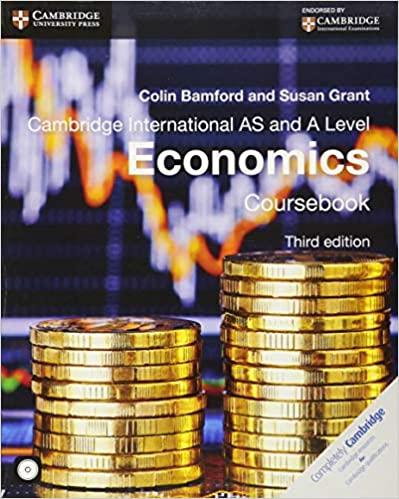


answer the following questions and explain it.
7. (a) Discuss the economic effects which the recent rise in Ireland's population may have on the Irish economy. (b) Outline the effects which a rise in the level of unemployment in Ireland may have on: (1) Government current finances. (ii) The Balance of Payments (Current Account). (iii) Price Inflation. (c) Immigration replaced high levels of emigration during the 'Celtic Tiger' period. (1) Discuss THREE reasons why the trend has changed from emigration to immigration in Ireland. (ii) Discuss the economic consequences (positive and negative) for a country experiencing increased immigration. 8. (a) Explain how specialisation and the division of labour promotes globalisation/internationalde. (b) The World Trade Organisation (WTO) aims to reduce trade barriers between countries. (i) Outline THREE possible economic advantages of free trade. (ii) Explain THREE economic reasons why countries may impose barriers to restrict trade. (iii) State and explain TWO methods of restricting free trade. (c) Adam Smith, author of "The Wealth of Nations' (1776), explained the reasons for and benefits of free trade. Outline FOUR other areas in which he made contributions to economic thought.5. (a) Discuss the ways in which money can contribute to the smooth working of an economy. (b) Explain the likely economic effects if: the supply of money grows at a faster rate than a country's production of goods and services (ii) the supply of money grows at a slower rate than a country's production of goods and services. (c) (i) Explain what is meant by the term price inflation. (ii) Name the main index used to measure price inflation in the Irish economy. (iii) Outline the economic consequences of a rise in the rate of price inflation in Ireland. 6. (a) Explain the following terms and show the relationship which exists between both: (i) Gross Domestic Product at Factor Cost (ii) Gross National Product at Market Prices. (b) Outline the effects which each of the following could have on the level of GNP at Market Prices. (i) a RISE in the general level of VAT; (ii) a REDUCTION in subsidies to first-time house buyers. Explain your answer in each case. (c) Discuss the positive and negative economic consequences which a fall in the level of economic growth (GNP) may have on the Irish economy.3. (a) (i) State and explain FOUR factors which affect a consumer's demand schedule, other than the price of a good itself. (ii) Explain the economic rationale for assuming that a person's demand curve for a normal good slopes downward. (b) For something to be considered an economic good, it must possess certain characteristics. State and explain THREE of these characteristics. (c) A consumer spends all income on two goods, Good A and Good B. Both goods are normal goods but they are not complementary goods. The price of Good A is reduced and the price of Good B remains unchanged. The consumer continues to spend all income on the two goods. Distinguish between the substitution effect and the income effect of the price reduction in Good A. 4. (a) Define each of the following: (i) Supply price of a factor of production. (ii) Transfer earnings. (iii) Economic Rent. (b) A principal factor influencing the demand for labour by an individual firm is the Marginal Revenue Productivity of Labour (MRP). (i) Explain what is meant by the underlined term. (ii) Discuss the factors, other than MRP, which influence the demand for labour by an individual firm. (c) The diagram below represents the supply curve of labour to a particular firm. Supply Curve Wage rate Supply of Labour Explain the effect which each of the following developments may have on this supply curve. Illustrate each answer by means of a diagram. (i) The workers shift their preference towards increased leisure time. (ii) The workers' trade union negotiates a minimum wage












